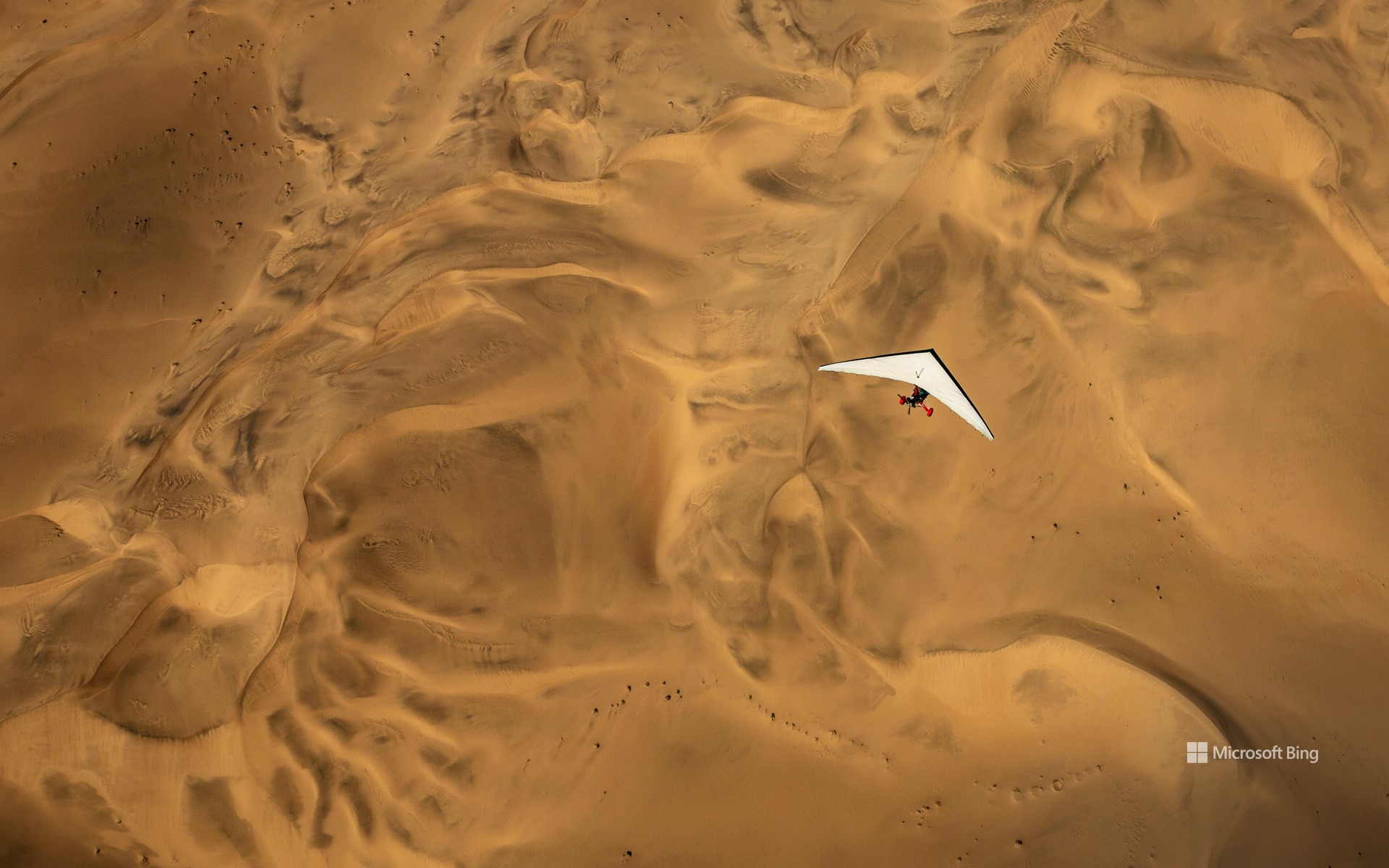一架超轻型飞机飞越纳米比亚沙漠 An ultralight aircraft flying over the sands of Namibia (© Burt Johnson/Alamy Stock Photo)

一架超轻型飞机飞越纳米比亚沙漠 An ultralight aircraft flying over the sands of Namibia (© Burt Johnson/Alamy Stock Photo)
不一般的沙漠之旅 Not your average desert trip
一架超轻型飞机飞越纳米比亚沙漠
想象一下,在轻型飞行器中翱翔于天空,风呼啸而过,俯瞰着如画的风景。下方是世界上最古老的沙漠:纳米布沙漠,在5500万年的风力作用下形成并不断演变。这就是纳米比亚,一片由高耸沙丘、干涸河床和流沙构成的超现实梦幻般的景观。
与传统飞机不同,超轻型飞机提供了无与伦比的自由感。它们也被称为微型飞行器,是一种专为低空、低速飞行而设计的小型飞机。各国对其重量和速度的限制有所不同;例如在美国,空载时重量应低于254磅,满功率飞行时速度不得超过55节(约63英里/小时)。超轻型飞机通常拥有开放式或半封闭式座舱,带来令人屏息的全景视野,使每一次飞行都成为一次沉浸式的体验。超轻型航空于20世纪70年代末至80年代初兴起,彻底改变了休闲飞行。凭借简化的监管和轻巧的设计,这类飞行器为探索世界上一些最偏远、最美丽的地方提供了一种既便捷又令人兴奋的方式,就像我们在今日图片中所看到的那样。
An ultralight aircraft flying over the sands of Namibia
Imagine soaring through the skies in an ultralight aircraft, the wind rushing past as you take in the view. Below, the world's oldest desert, the Namib, stretches endlessly, shaped by winds over 55 million years. This is Namibia—a surreal landscape of towering dunes, dry riverbeds, and shifting sands.
Unlike traditional aircraft, ultralights offer an unmatched sense of freedom. Also known as microlights, these small planes are designed for low-altitude, slow-speed flying. Their weight and speed limits vary by country; in the US, they should weigh under 254 pounds when empty and not go over 55 knots (63 mph) at full power. With open or semi-enclosed cockpits, ultralights provide panoramic views, making each flight an immersive experience. Ultralight aviation emerged in the late 1970s and early 1980s, revolutionizing recreational flying and offering an accessible and exhilarating way to explore some of the world's most remote and beautiful places.
评论已关闭